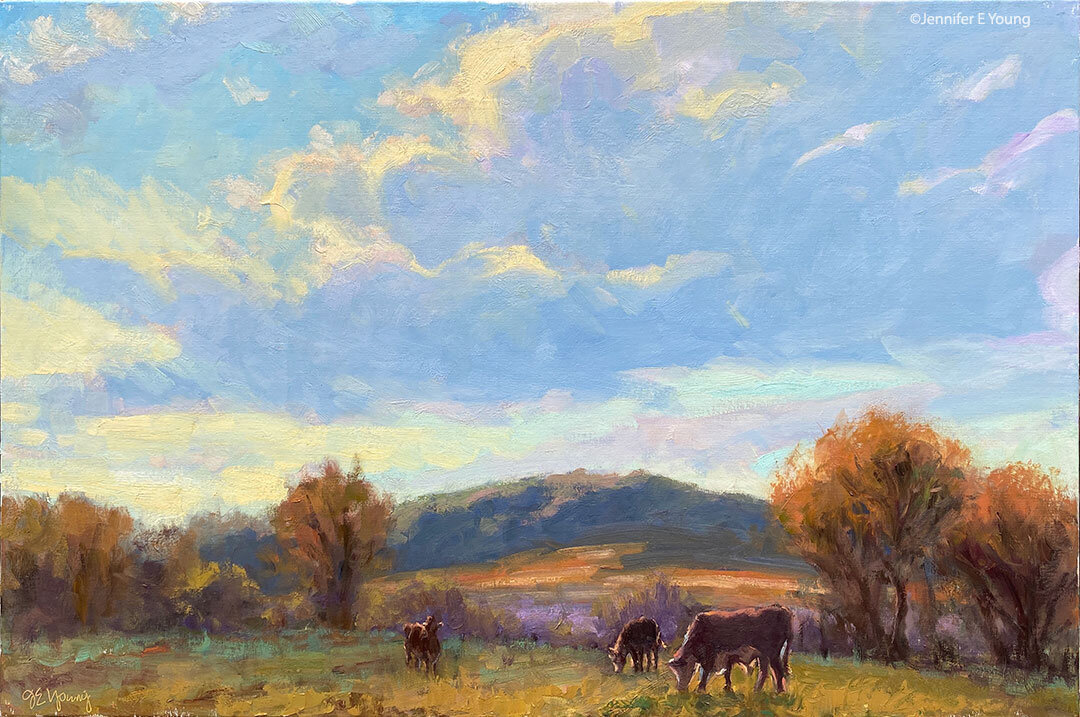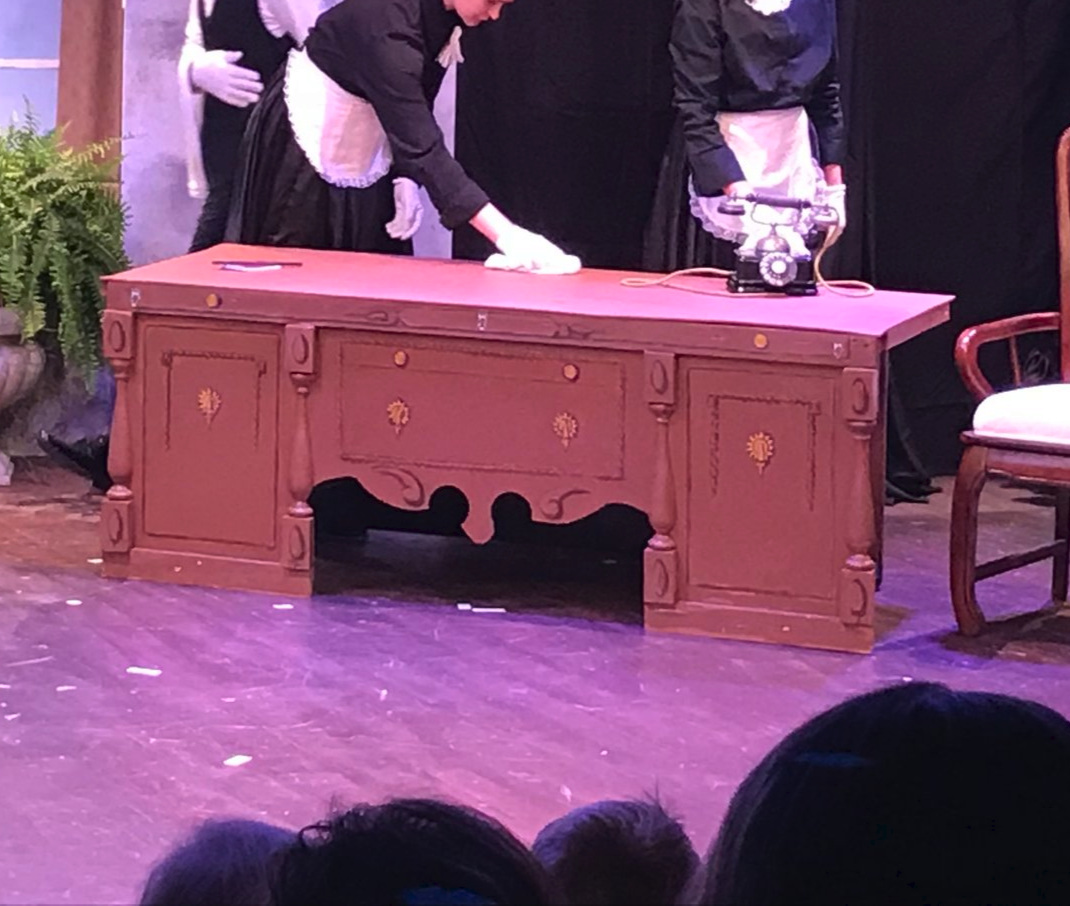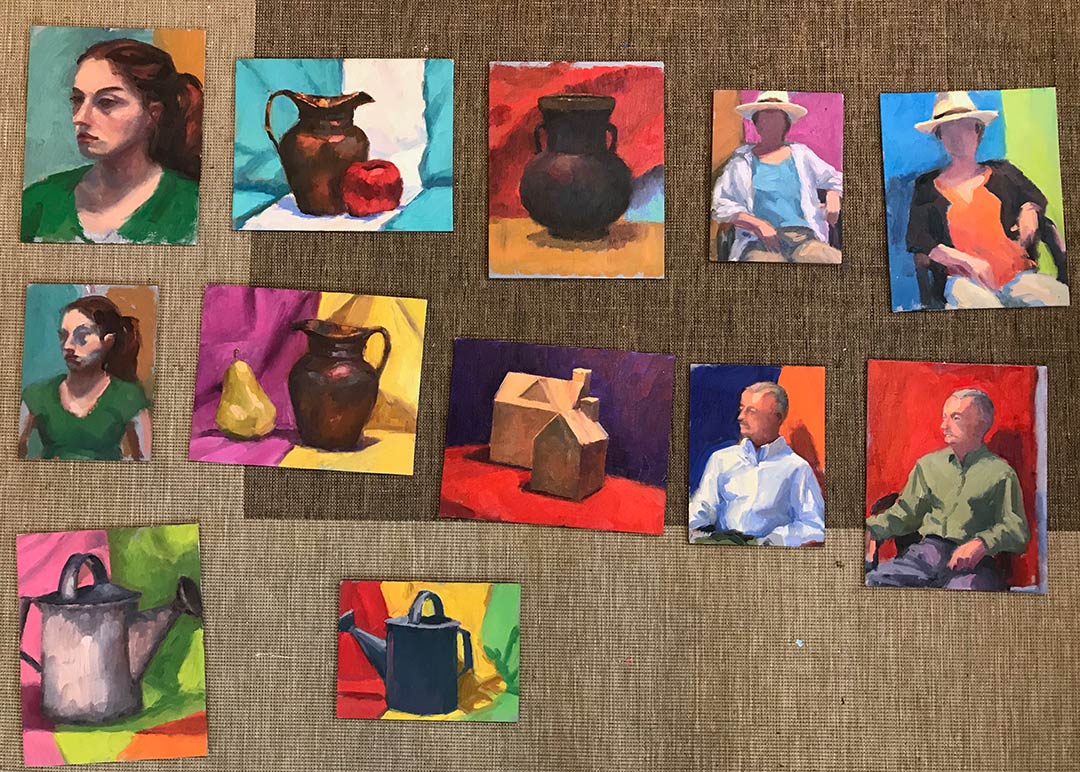I got spring fever last week, and while I think the area where I live in Richmond is beautiful, I go the hankering for some wide open spaces and mountainous vistas. I took a chance that the break in the weather would hold by planning a little trip to the mountains for a few nights. The cabin where I stayed is located near Charlottesville, VA, so it is only a little over an hour from my home.
I arrive in the afternoon to find the cabin situated in the countryside with redbuds, dogwoods, azaleas, wisteria, and lilac still blooming. Needless to say, it is a beautiful area! The property sits among rolling hills, and is bordered by a pasture full of grazing cattle. Upon my arrival at the cabin, I see one of the proprietors busy mowing the grass. Judging by the size of the property, this appears to be at least a half-day affair, so I decide to take the car and explore the area a bit more.
Hooray! I have found a great spot to paint! It is a nearby park with a beautiful apple orchard next to it. There are still blossoms on the trees, and I'm excited because I can set up directly across from the orchard on park property. By this time it is about 4:30 p.m. and my thought is that there should still be plenty of light for a couple of hours, so I took out a 12x16" panel and set to work. I guess I was a bit too ambitious for the first go. 12x16" is admittedly a small painting if you are working under consistent lighting conditions. But it suddenly seemed huge to me, especially in the rapidly changing light.
The light changed sooo fast. I have been used to the morning light, which also, in fact, changes pretty quickly, but this was super quick because the sun was steadily going down behind the mountains even before sunset. I barely got my canvas covered before the dramatic light and shadows on the mountains went completely flat and dull. I did take photos, and thought, well, I can finish it in the studio or perhaps on the field on the following day. Here is a picture of the painting in its incomplete form:

*Tip: I highly recommend sticking to a smaller canvas to start (no larger than 11x14) if you are just getting started painting en plein air, or if you are painting in rapidly changing light conditions. Pochades are excellent sizes to capture scenes quickly and loosely. The aim for me is to capture the light conditions of that particular moment in time, as a scene can look very different at different times of day and under different weather conditions.Â
You can always work on a larger painting in the studio using your plein air reference if you want to make it bigger later. Of course if you really feel like you want to do a big painting, have at it, especially if you know you can return again and again at the same time of day until you complete it. As it is for me when traveling, I usually get just one shot to get it down. It is far better to have small victories that accurately capture the light, than larger canvases that are incomplete and leave me wanting.
I will post some additional pictures from my plein air painting mountain trip in future entries, so stay tuned!
Tags: art painting landscape painting artist plein air

















